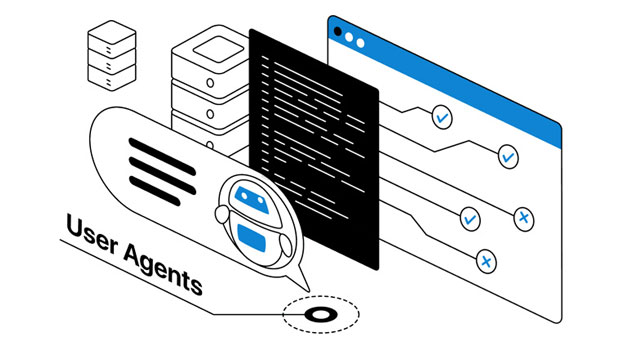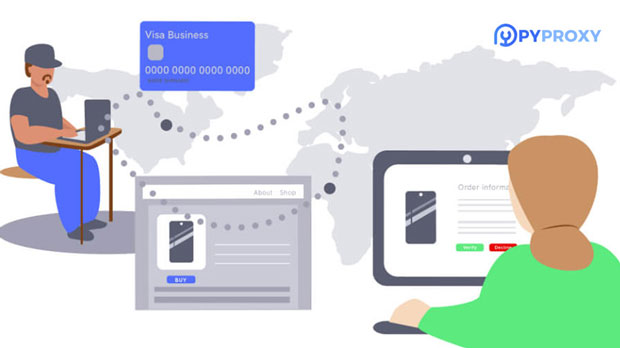When using proxy ip services for web scraping, browsing, or other online tasks, users often experience slow speeds. These delays can stem from various factors such as server load, geographical distance, or even improper configuration. Understanding these causes is essential for improving speed and achieving optimal performance when utilizing proxy IP services. This article explores the reasons behind slow proxy speeds and provides actionable tips on how to optimize proxy usage for faster browsing and better user experience. Understanding the Factors Behind Slow Proxy Speeds1. Proxy Server Location and LatencyOne of the main reasons for slow speeds when using proxy IP services is the geographical distance between the user and the proxy server. If the proxy server is located far from the user, the data needs to travel a longer distance, increasing latency and slowing down the connection. This is especially noticeable when accessing resources from regions that are far from the proxy server’s location, leading to increased delay times.To mitigate this issue, users can select proxy servers closer to their physical location or the target resource. Some services allow you to choose from a variety of server locations, making it possible to pick a server that is geographically closer to reduce latency and improve connection speeds.2. Proxy Server LoadProxy servers are often shared by multiple users, meaning that during peak hours, high demand can place a strain on the server, leading to slower speeds. When multiple users are accessing the proxy simultaneously, the available bandwidth gets divided, causing congestion and a reduction in overall speed. The load on a server directly impacts its ability to process requests efficiently.To optimize speed, it’s essential to use a proxy service that offers dedicated servers or allows for bandwidth allocation management. Dedicated servers are not shared with other users, ensuring more consistent and faster speeds. Additionally, choosing less popular servers during peak times can help reduce congestion and speed up the connection.3. Proxy Type and ProtocolDifferent proxy types and protocols can have varying impacts on speed. For example, HTTP proxies are typically faster than SOCKS proxies because they handle requests more efficiently. However, they also have limitations, such as a lack of support for certain protocols or increased vulnerability to certain types of attacks. On the other hand, SOCKS proxies offer better flexibility and security but may suffer from slower speeds due to the additional overhead involved.To optimize speed, users should choose the appropriate proxy type based on their specific use case. For example, if security is a priority, a socks5 proxy might be necessary, but if speed is the main concern, using an HTTP proxy could yield better results.4. Bandwidth LimitationsBandwidth limitations imposed by the proxy provider or the user’s own internet connection can also contribute to slower speeds. Many proxy services offer plans with fixed bandwidth limits, which can result in throttled speeds once the limit is reached. Additionally, users’ local internet connection speeds can also limit the effectiveness of the proxy, even if the proxy server itself is functioning well.To optimize bandwidth, users can either upgrade to a plan that offers higher bandwidth or consider optimizing their own internet connection. Ensuring a stable and fast local network connection is crucial for maintaining high speeds when using proxies.5. Proxy Configuration and MisconfigurationsIncorrect proxy configuration is another common reason for slow speeds. Proxy services often require specific settings to function correctly. Improper configuration, such as incorrect DNS settings, IP routing errors, or using outdated protocols, can result in reduced speed and performance. Additionally, some proxies may have built-in features like encryption or filtering, which can introduce overhead and slow down the connection.To optimize proxy speed, users should ensure that the proxy is correctly configured and that any unnecessary features, such as encryption, are disabled unless required for security reasons. Regularly updating proxy configurations can also help maintain speed and ensure compatibility with the latest protocols.6. Traffic Encryption and Privacy FeaturesWhile encryption and other privacy features are crucial for secure browsing, they can also introduce latency. Some proxy services offer encrypted connections to protect user privacy, but the encryption process itself requires additional processing time, which can reduce speed. This tradeoff between security and speed is a common challenge when using proxies.To strike a balance between privacy and speed, users should carefully consider the level of encryption needed for their specific tasks. For non-sensitive activities, using a proxy with minimal encryption or opting for a proxy that offers faster encryption algorithms can help improve speed.How to Optimize Proxy Speed1. Choose a Proxy Provider with High-Quality InfrastructureOne of the first steps in optimizing proxy speed is selecting a proxy service provider with a robust and high-quality infrastructure. Providers with high-performance servers, low latency connections, and good traffic management are more likely to offer faster and more reliable proxy speeds. Look for providers that offer scalable bandwidth options and ensure that their servers are equipped with the latest technology to minimize delays.2. Utilize Multiple Proxies and Load BalancingTo avoid overloading a single proxy server, users can use multiple proxies and implement load balancing techniques. Load balancing distributes the traffic across different proxies, ensuring that no single server becomes overwhelmed. This can significantly improve speed, especially for large-scale operations like web scraping, where the volume of requests can be high.3. Monitor and Optimize Network PerformanceRegularly monitoring the network performance of the proxy and the local internet connection is essential for identifying potential bottlenecks. By keeping track of bandwidth usage, latency, and server load, users can pinpoint areas that need improvement and adjust their usage accordingly. Tools like ping tests or speed tests can help users measure connection performance and make necessary adjustments.4. Test and Experiment with Different Proxy SettingsProxies often come with customizable settings that can be adjusted to improve performance. For example, experimenting with different proxy types, changing IP rotation frequencies, or adjusting timeout settings can lead to better results. Regular testing and tweaking of the proxy settings can help optimize speed over time.5. Consider Regional Proxies for Specific Use CasesIf the target website or service is geographically restricted, using a proxy server located within the same region can significantly reduce latency and improve speed. Regional proxies can also help avoid rate-limiting issues, as many websites throttle traffic based on geographic location. By choosing regional proxies, users can bypass these restrictions while still maintaining fast speeds.In summary, slow speeds when using proxy IP services can result from several factors, including server location, server load, proxy type, bandwidth limitations, and misconfigurations. By understanding the causes behind slow speeds and following best practices for optimization, users can significantly improve their proxy performance. Choosing the right proxy provider, configuring the proxy correctly, and utilizing techniques like load balancing and regional proxies are all effective ways to boost speed and ensure a smoother online experience.
Apr 08, 2025
![arrow]()




























































